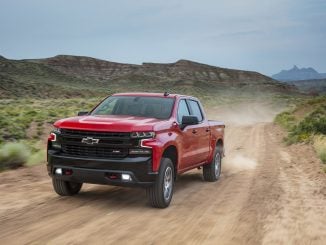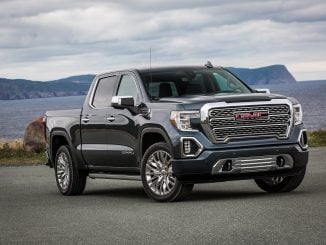PARK CITY, Utah — Okay, now I get it.
For years, General Motors and CEO Mary Barra have been talking about the company’s Ultium platform and how it’s such a big deal. GM has invested billions into Ultium, which is a new way to think about building cars. Instead of having a whole host of different platforms, Ultium is modular and configurable.
By combining different numbers of battery modules, GM engineers can adjust the size of a battery pack for the application. An oversized vehicle like the GMC Hummer EV has 24 different Ultium modules, totaling more than 200 kWh of electricity storage, but a small crossover would need less than half that. Traditionally, an enormous truck like the Hummer EV would have very little to do with a vehicle like the upcoming Chevy Blazer EV, but Ultium allows them to share parts and engineering. That saves money and enables vehicle enhancements to be shared across the line. Ultium is a big deal.
But until this week, I’d driven only one Ultium vehicle — the aforementioned Hummer EV Pickup — and didn’t truly understand how big a deal it is. Now that I got some seat time with the Lyriq, the $63,000 Cadillac of electric vehicles, Ultium all makes sense.
The Lyriq is a mix of crossover and wagon, depending on how you squint at it. I lean more toward wagon, but it doesn’t particularly matter. Inside, it has the proportions of a healthy two-row SUV with the seating position and cargo space to match. And let’s start on the interior because that’s the best part.
An enormous screen in front of the driver combines dash cluster and infotainment into one ultra-wide display. The right half is touch-sensitive, as is a small control panel on the far left that allows you to shift between modes on the instrument cluster. The screen is sharp, and the colors are vibrant, which is helpful because it runs Android Automotive, Google’s in-car platform. That means it supports full-screen Google Maps natively, and it looks terrific. You can get directions by talking to Google Assistant (“Hey Google, where’s the nearest Starbucks?”), and the Google Play store will eventually have all kinds of apps for you to download. In short order, you’ll be able to watch YouTube on your car’s screen while you relax at an EV charger.
The presence of Google Maps means I’m not so worried about plugging in my phone to use Apple CarPlay or Android Auto (which is different from Android Automotive, perplexingly), though both are supported wirelessly. In fact, using CarPlay means giving up a chunk of the slightly curved screen because CarPlay only works in a rectangle. There’s no head-up display, but Google Maps can take over your entire dash cluster, aside from a small portion showing your current charge status and speed.
The center console is floating, with a vast storage cubby on the floor that’s big enough for even the most oversized purse. There’s even a pop-out drawer with built-in illumination to store items you would prefer not fly around, and it’s easily big enough for a wallet or cell phone. Rest upon the armrest, and your hand lands on top of the media controls, with a scroll wheel to control the volume and a lovely crystal knob to control the screen if you don’t want to reach out and touch it.
The Cadillac of electric vehicles is here
Nearly everything in the car looks and feels premium, with a nice mixture of leather and metal touch points. The tiny knobs to adjust the vents are a particular high point, giving a very satisfying click when you make the quarter-turn to turn the airflow on and off. The only disappointment I could find was facing the back seat passengers at the rear of the console. There’s an odd cubby at the top that seems helpful for holding nothing at all, and I learned from an engineer that it was a casualty of the Lyriq’s accelerated development timetable. It’s meant to have a set of rear-seat HVAC controls.
The rear passengers have convenient access to a pair of USB-C ports for charging and a 110-volt residential power port, but the panel they’re installed in feels like cheap plastic and is out of place with the rest of the car. I gave this feedback to the team as it was a bit jarring considering how excellent the rest of the interior is. Especially good, however, is the ambient lighting (which I always love, but especially so here). The colors respond incredibly quickly, with a soft glow from within the speaker grilles on the doors, within every door pocket and cubby hole. There’s even a proximity sensor in the front storage bin that turns bright white when you stick your hand in there, so you can better find whatever it is you’re searching for.
The car’s exterior looks far better in person than in photos, with an elegant design without being showy. The front grille has a gorgeous waterfall welcome light show with a distinguished daytime running light display, while the back has elongated taillights that form a spectacular L shape when viewed from the side. The door handles are not handles but push buttons that electronically pop the door open so you can enter, similar to the offering in the Ford Mustang Mach-E, but with larger controls.
You may have noticed that I’ve barely talked about the driving experience, even as I started this review off with an extended treatise on Ultium. The Lyriq is very good to drive. The rear-drive version I had sports more than 300 horsepower and torque, and it feels planted on the road and responsive when you’re in the corners. It has a nearly 50:50 weight distribution, and the weight is low to the ground thanks to its large battery pack. It handles well, sporty but not too sporty. Anyone buying this Cadillac will have no complaints.
Starting around $63,000 for RWD and $66,000 for AWD (later availability), the Lyriq is not eligible for any federal tax credit as GM hit its 200,000-unit limit years ago. But the Lyriq is competitive for an EV and a luxury car in general. Cadillac has seemed lost for a few years now, unable to deliver any particularly noteworthy vehicles aside from the Escalade. That’s all changed with the Lyriq.
I was impressed with the Lyriq, and I’m excited to see what the future has in store for the storied Detroit luxury brand. The Cadillac of electric vehicles is here, and the future is bright.



